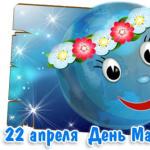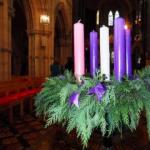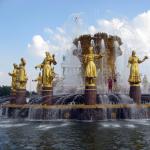Earth Day. world earth day april 20 earth day
On April 22, the world celebrates a global holiday held under the auspices of the UN - International Mother Earth Day.
International Mother Earth Day has been celebrated annually on April 22 since 2010. Established by the UN General Assembly in 2009 (resolution No. A/RES/63/278). More than 50 UN member states co-sponsored the resolution.
The document states that the term “Mother Earth” is generally accepted in many countries and reflects the dependence between the planet, its ecosystems and humans. Inviting all UN member states, international and non-governmental organizations to celebrate “International Mother Earth Day”, the General Assembly emphasized that Earth Day is already celebrated annually in many countries.
According to some reports, this International Day arose on the basis of the Tree Day previously celebrated in the United States.
The tradition of celebrating Earth Day on April 22 originated in the United States in 1970, and in 1990 this day became an international event.
In Russia, the holiday has been celebrated since 1992. Moreover, every year this Day is dedicated to a specific topic.
In the Northern Hemisphere, Earth Day is celebrated in the spring, while in the Southern Hemisphere it is celebrated in the fall. The main goal of this worldwide action is to attract the attention of society and every person on the planet to the problems of the Earth, to the problems of its environment.

It is known that age of planet earth is approximately 4.5 billion years old. If you try to go around the Earth, walking along the equator, you will have to travel a distance of almost 40,010 kilometers.
Distance from the surface to the center of the Earth equals 6378 kilometers. Solid rocks (lithosphere) form a layer of only about 70 kilometers, and, moving further inland, we observe semi-liquid and liquid states.
The hottest place on Earth- Death Valley in California and a place in Libya called Al Azizia. The Al Azizia record is 57.8 degrees Celsius (September 13, 1922), the Death Valley record is 55.8 degrees Celsius (July 10, 1913).
The coldest place on Earth- Antarctica. There, on July 21, 1983, at the Vostok research station in Antarctica, -89 degrees Celsius was recorded.
The earth is incredibly rich in minerals - scientists have already classified about 4,000 types of minerals, about 200 of them are of practical importance. Every year 50-100 types of minerals are discovered.
The Earth has one natural satellite - the Moon visible to the naked eye.
Mother Earth Day on April 22, like Earth Day, held on the vernal equinox, gives every resident in every populated corner of the planet the opportunity to express gratitude to our large common home.
Every year, scientists from around the world gather on this day at a round table to discuss global environmental problems. A wide variety of events and promotions are organized in different countries. These include conferences, exhibitions, closing traffic on the busy streets of large cities, cleaning the area and planting trees.
In Russia, International Earth Day is traditionally considered the day of public organizations that hold various environmental events and campaigns on this day.
On this day, everyone can take part in the improvement and landscaping of their yards and streets.
Mother Earth! We often hear this expression and often use it in our daily life when communicating. The meaning of the expression and what we put into it simply emerges from the formulation itself. The earth is our nurse, our common home, created by God, where there are all the necessary and unique conditions not only for our survival, but also for enjoying life in all its glory.
The earth gives itself entirely to us, unconditionally gives us love, despite our somewhat barbaric attitude towards it. Like an affectionate and caring mother, the Earth provides, gifts and “educates” her foolish children. How do we answer her? This issue has long been of urgent relevance in different countries of the world.
Humanity, however, has paid attention to its role and position in the ecosystems of our planet. Thus, in March 1971, the UN Secretary General proclaimed a holiday - World Earth Day. The exact date when it is celebrated Earth Day 2017, as well as some of the features of this amazing holiday, you will learn from our article.
When is Earth Day 2017?
In general, there are two holidays that relate to honoring our planet - these are World Earth Day and International Earth Day.
World Earth Day 2017 is celebrated on March 21, the vernal equinox. Another environmental holiday falls on this date - International Forest Day.
Despite these two main periods for the Earth Festival, many initiative groups and ordinary participants plan a number of events and hold them somewhere around the summer solstice. In other words, the organizers create all the conditions so that everyone who wants to take part in the holiday makes the most of the good weather and their free time.
Whatever name is used and whenever the holiday is held, one thing is important - that on Earth Day people “wake up”, thanks to all kinds of promotions and events, and take a new look at their relationship with Mother Earth. Perhaps, thanks to the holiday, many will think about their actions and actions, which in one way or another are aimed at the slow destruction of our amazing planet.
A little history: what do we know about Earth Day?
The very first action in support of the Earth took place in the United States in 1970. The success of the “one-time” event inspired the organizers so much that the following year they repeated the celebration on a larger scale. Since then, the major exaltation of the planet on one spring day began to be repeated year after year.
The holiday became official in 1971, when Senator Gaylord Nelson, inspired by the resounding success of the first Earth Day, proclaimed the entire “Earth Week” as an annual event celebrated during the third week of April. Traditionally, the Peace Bell rings on Earth Day.
In the wake of political and social activism that Earth Day generated, many environmental laws and regulations were passed in the United States.

In 1990, the holiday became an international event, in which 200 million people from 141 countries took part. And by 2000, hundreds of millions of people from 181 countries took part in the action.
In 2009, the UN General Assembly declared International Mother Earth Day and decided to celebrate it on April 22. Despite this, some countries still celebrate Earth Day on the day of the vernal equinox (when the length of the day is equal to the length of the night), thereby marking the onset of spring in the Northern Hemisphere and autumn in the Southern.
In Russia, Earth Day is celebrated as part of the Days of Protection from Environmental Hazards, which take place annually in our country from April 15 to June 5.
Symbolism
On the day of the vernal equinox or, invariably, April 22, on many Internet resources you can see the green Greek letter Theta (Θ, θ) on a white background and the flag of the Earth, which is a photograph of the planet from space.
The Greek letter Θ, θ (Theta) is the eighth letter in the Greek alphabet and has the numerical value of nine in the Greek alphabetical notation of numbers.
The Earth flag is an image of planet Earth on a dark blue background. The photo currently being used is one taken by the Apollo 17 astronauts as they headed toward the Moon. Traditionally, the Earth flag is associated not only with Earth Day, but also with a number of other environmental holidays, as well as environmental, civic and peacekeeping events at the international level.
Holiday traditions

The main goal of the holiday is to “support and preserve.” Every year on the day of the holiday, world-famous and recognized scientists gather at a round table and discuss the problems of the planet in an environmental direction. Many countries are hosting a wide variety of events aimed at preserving water, earth resources and other gifts of nature.
List of approximate actions and events that are held on Earth Day:
- peacekeeping actions;
- festivals;
- environmental exhibitions;
- conferences;
- concerts;
- street cleaning;
- marathons;
- tree planting;
- cultural events;
- traffic stop;
- ringing of the Peace Bell.
Peace Bell
On the Earth Day holiday, in many countries around the world, according to the good old tradition, the Peace Bell sounds, and with its ringing it calls on the inhabitants of the Earth to feel the planetary community and try to make every effort to protect peace in our common Home.
The Bell of Peace is a unique symbol of eternal brotherhood, solidarity of peoples, tranquility, friendship and peaceful life. At the same time, the Peace Bell is a loud call to action in the name of preserving Man, Culture and Life on Earth.
The very first Peace Bell was cast from coins donated by children from all continents, and it was also fused with medals and orders from people from different parts of the world. The first Bell was installed in 1954 in New York, at the UN headquarters. “Long live universal peace throughout the world,” reads the inscription on the Peace Bell.
In the spring, the inhabitants of the planet celebrate several wonderful holidays. One of them is World Earth Day. Its date coincides with the vernal equinox. In 1971, the UN Secretary General asked people to unite, be friends, take care of our common fragile home and established a holiday. On March 21 of the same year it was held for the first time.
In 2009, the UN drafted a resolution in which it approved another date to honor the planet. The second official holiday - International Mother Earth Day - falls on April 22.
The timing for these events could not be better. Nature is awakening from its winter sleep, the freshness of young leaves is everywhere. Such an environment makes people feel the beauty of nature and think about what can be done to save the wonderful world from environmental disaster.
A symbol of peace
On the twenty-first of March, people come out of their homes to express their solidarity with each other. For them, the ringing of the Peace Bell sounds like beautiful music, calling them to think about the preservation of all living things.
This symbol of peace did not appear by chance. In 1952 he was brought to New York and ended up at the UN headquarters. To cast this miracle in memory of the victims of the nuclear bombing, children from many countries collected coins for several years and sent them to Japan. The bell was installed on a special structure. If you get closer, you can read on the metal: “Long live world peace.”
The unique bell, created almost immediately after the war, is a symbol of brotherhood and unity for many people. His alarm calls not to stand on the sidelines, but to participate in a common cause - the preservation of the fragile world and nature. Gradually, such bells appeared in cities with different cultures.
The celebration of the holiday is worldwide, and Earth Day is a civil initiative. People plant seedlings, clean up areas, and organize exhibitions dedicated to Mother Earth. As a sign of respect for her, major cities temporarily block traffic.
How did it all start?
International Earth Day, which is celebrated in April, has been around for a long time. The history of its origin is quite interesting.
In the 19th century, forests were barbarically cut down in America. People used the valuable wood to build houses, as firewood and for other needs. Many groves were completely destroyed. This could not but worry people who love their region. Eventually, the Nebraska Secretary of Agriculture took the initiative to restore the forests.
To do this, he invited every resident to plant trees and established a prize for the one who grows the most. People enthusiastically took up an interesting task. In just 1 day, more than a million green spaces were rooted. After some time, the state authorities established Tree Day, which is still celebrated simultaneously with Earth Day - April 22.
Large-scale celebrations first took place in 1970. American students, under the leadership of G. Nelson, united and organized environmental actions throughout the country. Schoolchildren, college students and ordinary Americans took part in them. People liked greening their cities and caring about nature conservation so much that Earth Day began to be celebrated annually.
Another event influenced the popularity of the holiday. In 1969, a disaster occurred in the city of Santa Barbara. Oil spilled, the ocean was very polluted, and hundreds of animals, fish and birds died as a result. The Americans were horrified by the event, and they came out en masse to eliminate its consequences. Afterwards, many people could not stand aside and decided to annually remind everyone that it is necessary to protect nature.
In 1990, they decided to celebrate Earth Day in many countries, and the environmental campaign became truly international, because about 200 million people were involved in it. Russia has been an active participant in the celebration since 1992.

Attributes
International Earth Day is symbolized by the Greek letter θ. This green sign is depicted on a white square. It was invented by the initiator of honoring the Earth - G. Nelson, Wyoming state senator.
In addition, there is a flag of the planet. This is an unofficial symbol that can often be seen at events dedicated to protecting the environment and preserving peace.
The flag is a photograph of the globe taken from space by American astronauts. On your favorite planet, seas, mountains and forests are clearly visible, it floats against a blue background. Looking at this flag, you are once again convinced of how beautiful and fragile the world is, which needs protection and care.
Events
Over the years, the celebration has developed traditions. On the day of the solar equinox and April 22, numerous promotions and events take place:
- rallies calling for peace;
- song festivals and exhibitions dedicated to ecology;
- concerts, sports races and marathons;
- street cleaning and landscaping;
- the ringing of a bell, requiring one to think about peace on earth.
Every year, leading scientists gather at a round table and discuss what can be done to preserve amazing nature, to conserve the resources of our earth and to solve other environmental problems, which are becoming more and more numerous.
Different countries have their own traditions on this holiday.
- In Budapest, it is customary to hold multi-thousand races and other sports competitions.
- On April 22, 2008, an unprecedented event took place in Seoul - a day without road transport.
- In the Philippines, they like to celebrate International Mother Earth Day with bicycle races and hold seminars on the development of environmental education.
- A few years ago, Christie's auction house held a special auction called "To Protect the Earth." Many famous people and politicians took part in it. All proceeds were donated to environmental organizations, many of which went towards protecting the world's oceans and national parks.
- Every year, the World Wildlife Fund holds an event in which all people can take part. It occurs on the last Saturday of the first month of spring and is called Earth Hour. On this day, at a certain time, the lights are turned off on the central streets, in the world's museums, and palaces. Times Square is plunged into darkness, the Eiffel Tower and many homes of ordinary people are not lit. According to independent estimates, more than a billion people around the world participate in this action.

Holiday in Russia
Since Soviet times, our country has maintained a wonderful tradition of going to community cleanups every spring. This allows you to tidy up your yard after winter and plant young tree seedlings.
The warmth of spring days encourages people to go outside, dig up a flower bed in front of the house, remove garbage and make the planet a little cleaner and more beautiful.
In Russia, on this significant day, public organizations hold mass actions in defense of the environment, and ordinary people go into nature, taking with them a shovel, a rake and young tree seedlings. And, of course, the Peace Bell sounds, which is installed in Novosibirsk within the G.N. Roerich.
What is this day for?
International Mother Earth Day is incredibly relevant. Right now, scientists have calculated that humanity could die within 300 or 1000 years. This is all due to the consumer attitude towards nature and the large-scale destruction of forests, rivers, and valuable resources.
- Until the technological revolution occurred in the world, human actions did not cause significant damage to the earth. A natural balance was maintained, which was disrupted by the new possibilities of humanity.
- Now the time has come to realize that our planet is a kind of spaceship that has everything for long-term operation, but, unfortunately, we cannot stop and replenish resources, so they need to be protected.
- By polluting rivers and cutting down forests, we deteriorate air quality, destroy flora and fauna, and bring the death of the planet closer.
Russia has preserved unique corners of wild nature, untouched landscapes, and deep lakes. But if you don’t stop the deforestation of taiga forests, pouring chemical waste into rivers and littering the world’s oceans, these values can be lost very quickly.
To prevent this from happening, an international holiday was invented, and Earth Day is celebrated in all corners of the world. On this day, everyone should think about the future of the planet. Everyone's participation is important for nature conservation. Any contribution will be beneficial. You don't have to go far. Look around, plant a tree, remove the trash near the entrance, dig up a garden bed, sow flowers, and life will become more beautiful.
Earth Day
“Earth Day is a special time that is intended to attract
the attention of all people to the awareness of planet Earth as their common home, to feel
our universal community and mutual dependence on each other.”
Earth Day is celebrated all over the world on March 20, at the initiative of the UN. Moreover, in the calendar of international holidays there are two Earth Days - today is celebrated on the Vernal Equinox, and the second is on April 22. The first has a peacekeeping and humanistic orientation, the second - environmental.
The date March 20 was chosen and officially approved in 1971 by the UN for Earth Day precisely because the spring equinox falls at this time, when the biological rhythm of the planet changes and it moves to a new stage of its development, when nature awakens and renews itself. The UN message says: “Earth Day is a special time that is intended to attract the attention of all people to the awareness of planet Earth as their common home, to feel our universal community and mutual dependence on each other.”
Earth Day traces its roots back to Arbor Day, which celebrates gardening.
The founder of this Day is considered to be the famous American public figure John Morton, who in the 1840s launched a campaign to plant trees and shrubs as part of a program for every citizen of the country to respect the environment. And when he became Secretary of the Nebraska Territory in 1872, he proposed establishing a day dedicated to landscaping. This is how Arbor Day appeared, which immediately became very popular. During the first Day, residents of the state planted about a million trees, and their initiative soon grew into a social movement. Beginning in 1970, the meaning of the holiday expanded to the general idea of environmental protection, and a new name appeared - Earth Day, which became national. In 1971, the UN officially adopted this holiday, and subsequently it became global, receiving more and more international support every year.
Today is Earth Day - a worldwide movement of civil initiatives in defense of the planet as a common global Home, uniting many different events and actions, both environmental and environmental, and peacekeeping. This is not so much a holiday as an occasion to once again think about the problems of a fragile and vulnerable environment, the problems of relationships between humans and the surrounding world. In Russia, Earth Day is celebrated as part of the Days of Protection from Environmental Hazards.
Among the most popular events in protecting and improving the environment held on this day in different parts of our planet are environmental exhibitions and festivals, marathons and conferences about nature, cleaning streets and areas in cities, planting trees and stopping traffic on busy roads. streets of major cities, cultural events and concerts...
It is also worth noting that, according to established tradition, every year on Earth Day in the vast majority of countries it is certainly customary to ring the Peace Bell for one minute, which is a symbol of peaceful life, friendship and solidarity of all peoples, and a call to action in the name of preserving culture and the best achievements of humanity. And the meaning of this ceremony is that during this minute, people think about how to preserve our beautiful planet, how to improve life on it, to feel like residents and part of the Earth.
Opening of the event “Bell of Peace on Earth Day” at the International Roerich Center-Museum on March 20, 2008
The first Peace Bell was cast in 1954 in memory of the tragedy of Japanese cities that survived the nuclear bombing, and installed at the UN headquarters in New York. It is cast from coins collected by children from all continents; orders and medals and other honorary badges of people from many countries are also fused into it. The inscription on the Bell reads: “Long live universal peace throughout the world.” Then similar bells began to be installed in other countries - Japan (1954), Germany, Poland, Turkey (1989), Mexico (1990), Australia (1992), Mongolia (1993), Canada (1996), Brazil (1997), Argentina (1998), Ecuador (1999), Uzbekistan (2003) and other countries. Russia joined the Peace Bell on Earth Day campaign in 1998.
Earth Day also has its own flag depicting one of the first photographs of our planet from Space. This is a sign of awareness that only through joint efforts can we solve global environmental and social problems on Earth. Therefore, it is no coincidence that this holiday is actively supported by astronauts. After all, they were the first to tell the world how beautiful and defenseless our planet is, and how it needs the careful treatment of all of us.
--------------
Earth Day, celebrated on April 22, has an unusual meaning. It attracts public attention to environmental environmental issues and encourages everyone to take part in landscaping and street improvement, various environmental campaigns, festivals and events.
history of the holiday
Back in 1970, American Senator G. Nelson created a voluntary group of students calling on the population to preserve a favorable climate on earth and to protect the environment in general. The student march in the USA subsequently took the turn of a national movement and spread almost throughout the world.
Now Earth Day has acquired international significance; it is a day of environmental conservation and a reminder that every person must be responsible for the environment that surrounds him and all humanity.
Earth Day is celebrated on April 22, when we think about land, air and water - everything that is so important for a full life.
According to the resolution of the UN General Assembly in 2009, World Earth Day is celebrated on April 22. The earth is our cozy, common home. The proclamation of this holiday was a confirmation of the need to achieve harmony between man and nature, with planet Earth and to achieve a balance between the needs of the current and future generations (social, economic and environmental).
This truly global holiday has always been accompanied by the sounding of the Peace Bell. Since 1989, the bell has been installed in major cities in Japan, Germany, Poland, Mexico, Australia, Turkey, Canada, Brazil, Uzbekistan, Russia and other countries. In Russia, Earth Day has been accompanied by the sound of a bell since 1998.
our planet
What is it like, Earth? The age of our planet is about 4.5 billion years, the path along the equator is 40,010 km, the distance from the center to the surface is 6,378 km. The hottest places are Death Valley (California) and Al Azizia (Libya), and the coldest is Antarctica. Our planet has 4 thousand. types of minerals, many of which have found practical application. The Earth has a satellite visible to the naked eye - the Moon.
Features of the celebration
On Earth Day, every person on the planet can express great gratitude to their common home. This day may not be as solemn as other universal holidays, but it is a day of purity of the earth, air and water - everything that is so important for a full life.
This day is dedicated to environmental environmental issues: from landscaping and street improvement to environmental campaigns and events.
The older generation probably associates this day with Lenin’s subbotniks, during which park areas, squares, courtyards were cleaned, and green spaces were planted. Was this a bad custom? You can simply change the name of the holiday in your mind and also do good deeds for the Earth with inspiration.
Every year on this day various promotions, events, exhibitions, and conferences are organized. In many countries, it is customary to close traffic and plant trees. World scientists discuss global environmental problems at a round table on this day. Everyone comes together to improve the streets and courtyards. After all, every person knows his purpose in life - to build a house, plant trees and raise children.
Let's take care not only of our home and garden, but of everything that surrounds us within the radius of planet Earth!
BEAUTIFUL LAND









